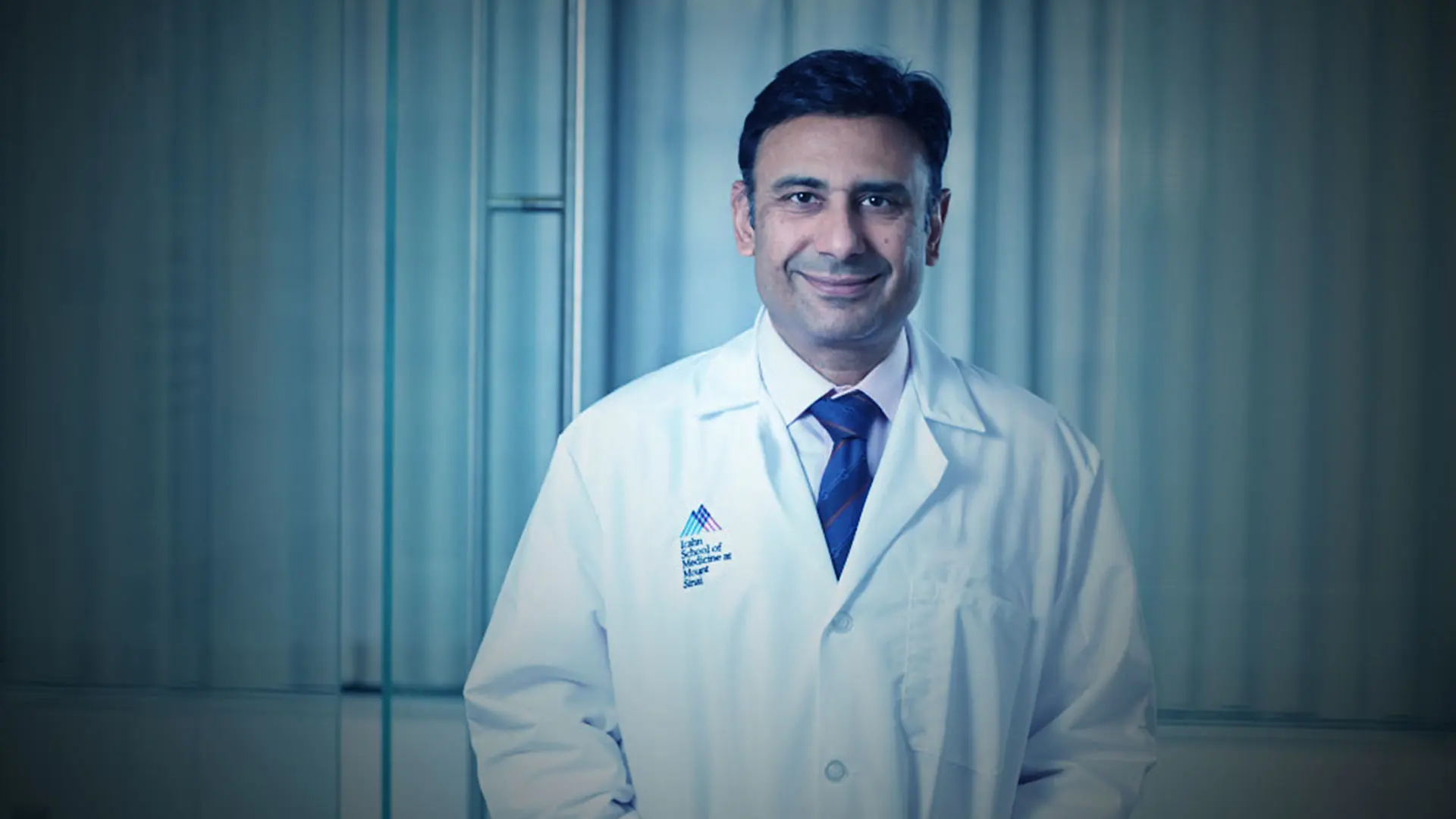As the incidence of kidney stones continues to rise among men and women in the United States, with about 10 percent of the population affected, so does the cost of percutaneous nephrolithotomy (PCNL). At Mount Sinai, Mantu Gupta, MD, a pioneer in PCNL procedures, is helping to popularize a new approach to treating kidney stones that is not only cost efficient but also safe and effective: ultra-mini PCNL.
Ultra-mini PCNL fills a niche in kidney stone treatment, enabling urologists to remove relatively large stones through a minimally invasive outpatient procedure. Dr. Gupta is one of only two urologists nationwide who are currently performing ultra-mini PCNL. He describes it as very similar to a standard, modified, or mini PCNL but notes that it uses a smaller incision—a tract size between 11 French and 13 French, which is approximately four millimeters.
“Although it is a very small incision, we are able to remove stones that are approximately 5 to 6 times that size,” says Dr. Gupta, Site Chair of Urology at Mount Sinai West and Mount Sinai Morningside, and Professor of Urology at the Icahn School of Medicine at Mount Sinai.

Mantu Gupta, MD, Site Chair of Urology at Mount Sinai West and Mount Sinai Morningside, and Professor of Urology at the Icahn School of Medicine at Mount Sinai, is leading the movement to set a new gold standard for the field through the use of flexible ureteroscopes.
Dr. Gupta initially offered the ultra-mini PCNL to patients presenting with kidney stones up to 1.5 centimeters in size, but he increased that to 2-centimeter stones as he became more experienced in performing the procedure. The alternative for treating stones of that size is ureteroscopy with laser, but he notes that it is impossible to remove all the stone fragments created by the laser without several trips through the ureter. As a result, patients are typically discharged with stents or tubing to help vacate these fragments.
“Stents can be very uncomfortable for patients, and some are unable to tolerate them,” he says. “Studies have shown that fragments left behind can become a nidus for new stones to grow, and most patients who have residual fragments will have another symptomatic stone episode within three to five years of a ureteroscopy with laser treatment. The advantage of ultra-mini PCNL is that I can vortex out all the fragments using a metal sheath during the procedure. That means patients can be discharged the same day with no stents, tubing, or stones.”
Patients undergoing an ultra-mini PCNL lay flat as opposed to the typical lithotomy position, but they are tilted 10 to 15 degrees to raise the side of access. It typically takes Dr. Gupta 60 to 90 minutes to complete the procedure, and the incision is so small that he seals it with glue instead of a stitch and advises patients to take ibuprofen for any pain they experience.
Once completed, Dr. Gupta conducts a 24-hour urine profile of the patient’s calcium, oxalate, citrate, magnesium, phosphorus, and uric acid levels to identify the factors that led to the kidney stones. Based on his findings, he recommends a therapeutic approach, such as a low oxalate diet or citrate supplement, to prevent the stones from forming again. Dr. Gupta also conducts post-operative imaging at one month with an ultrasound and X-ray to ensure there are no residual fragments.
More than 20 patients have undergone ultra-mini PCNL since Dr. Gupta began performing the procedure in February 2021, and there have been no complications necessitating transfusion. Feedback has been uniformly positive, particularly among patients who have a history with a stent.
“They are very enthusiastic about avoiding the pain associated with that, but the one thing patients talk most about when they come in for their first post-op consultation is how small the incision is,” he says.
Based on these results, Dr. Gupta is exploring the potential of using this type of mini tract to remove tumors in the kidney and to treat strictures of both the ureteropelvic junction and the ureter. He is also launching a study to assess whether the risk of kidney damage from an ultra-mini PCNL is lower than that of other treatment modalities such as ureteroscopy, PCNL, and mini PCNL.
“There are certain proteins that are elevated after surgery that indicate there has been kidney damage, and we expect to be the first researchers in the world to explore the potential of these biomarkers to help minimize damage,” he says.
